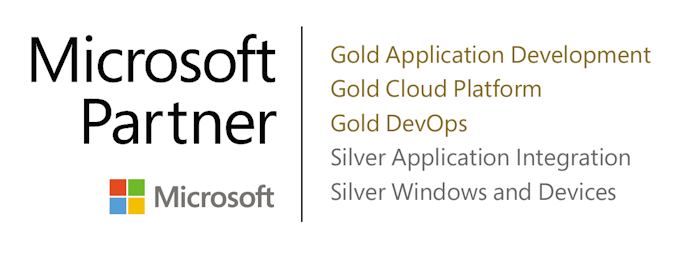BACKGROUND
Whitacre Rebar manufactures and places reinforcing steel for major construction projects.
 The 100-year-old company serves markets in Ohio, New York, Pennsylvania, and West Virginia from facilities in Canton, Ohio, and Syracuse, New York.
The 100-year-old company serves markets in Ohio, New York, Pennsylvania, and West Virginia from facilities in Canton, Ohio, and Syracuse, New York.
Rebar fabricators differ from conventional manufacturers because of the size and complexity of each project. Multiple variables enter a rebar job, including manufacturing to order, and installation on-site, plus the construction challenges of scheduling, weather, and specification changes. Unlike general contractors who construct a handful of projects yearly, a rebar company might deliver hundreds, even thousands of jobs.
Because of the niche nature of the business, Whitacre Rebar assembled a suite of stand-alone applications to run its operations. These included:
- Construction ERP Software – Using a leading ERP software for the construction industry, the ERP ran the financials, including inventory, invoicing, purchasing, and general ledger.
- aSa Rebar Software – The industry-standard management package for rebar handles estimating, detailing, production, material tracking, and billing.
- Paycom – This cloud-based payroll system tracks all field labor to run payroll and compare hours worked against bids.
- Office 365 – Microsoft Office manages email, documents, and contracts.
- Goldmine – Whitacre used this desktop CRM to manage all customer contacts.
PROBLEM

CEO, Scott Clymire
Whitacre’s collection of apps worked surprisingly well but suffered in scalability, visibility across systems, responsiveness, and the ability to integrate siloed data. For this reason, the legacy system hit a dead end.
“As we grew over the years, we started buying different pieces of software we could afford – a CRM, ERP, rebar production software, payroll, and Office 365,” Scott Clymire, CEO of Whitacre, explained. “We set up opportunities in our CRM system, then set up the project in our rebar software, and set it up again in our ERP accounting software, created documents and email in 365, and paid the installers with our payroll software. We had all this administrative cost and lost time just doing job setups, which added no value.”
ADDITIONAL CHALLENGES
 TwinEngines began the project by modeling the way the company worked. In the process, several management challenges emerged:
TwinEngines began the project by modeling the way the company worked. In the process, several management challenges emerged:
- Each job included a mix of raw materials, shop fabrication, installation labor, and shipping.
- Managing a project required five different systems, which worked until the lack of visibility across all data affected project management.
- Several contractors might ask Whitacre to bid on the same project – all with different requirements to win the contract.
Projects encountered complex billing scenarios, including billing on shipment, FOB, billed upon installation, billing in scheduled phases, and percent complete. This required tracking actual against estimated versus percent billed. Additionally, tracking labor costs against the bid required a way to capture labor costs in the field.
THE SOLUTION
TwinEngines modeled the workflow and then developed a detailed set of requirements. Choosing which legacy components to keep was the first step in building an efficient and affordable solution. TwinEngines dropped the outdated Goldmine and developed CRM functionality into the solution.
“We realized that the existing collection of apps performed well,” Kevin Seefried of TwinEngines explained. “The gaps between the different systems were the source of the problems. We chose to keep most of the components and develop a Web-based integration platform to tie them together. We defined each stage of a rebar project and created stage-specific dashboards that would give users access to the relevant information.
“For example, during the Opportunity phase, Whitacre receives RFPs, manages contacts, and develops detailed estimates. These three functions alone draw on the ERP, CRM, aSa system, and Office 365. We pulled the relevant data needed during the bidding process and reassembled it into an Opportunity dashboard. This put real-time data in hand for both the salesforce and estimating teams to respond to customer queries and manage workflows.
“To manage the production phases of a project, we built additional dashboards for Production, Shipping, and Field Installation. Having one system to manage the project across all phases introduced a new level of visibility and productivity to their operations.”
RESULTS

Whitacre calls the new system “WeCore” as it now forms the core of their business. Scott Clymire described the increase in visibility company-wide:
“With the new system, a shop manager has visibility into the drawings that went out for approval, the bill of material, and the work order. If a job is on the schedule that needs to deliver on Monday and it’s already Thursday, in the past, he would call, leave a voicemail and eventually get an answer. Now, he can click on a tab and see the status. Visibility across the entire team has drastically improved.”
“WeCore also allows us to do data entry in one place and then push it to all of the applications,” Clymire continued. “When we hit save, it performs an update routine on our other databases. Before, I would spend hours mining the data and then analyzing it, and now I push a button and use that time for planning from the data.”
Kevin Seefried explained further: “Our Business Process Technology includes a library of workflow tools that allow us to future-proof the system. As Whitacre adopts new or upgraded apps, we can integrate these systems with relative ease. Our library of integration tools and modules allows us to quickly align the company’s business operations with the digital platform – what we call the ‘digital twin.’”

TECHNOLOGY
- MS C#
- .NET
- SQL Server
- MS Visual Studio
INTEGRATIONS
- Construction ERP software
- aSa Rebar Software
- Paycom
- Office 365
“We had all this administrative cost and lost time just doing job setups, which added no value.” CEO, Scott Clymire said.
Whitacre calls the new system WeCore as it now forms the core of their business.
According to Clymire, “Now, we can click on a tab and see a project status. Visibility across the entire team has drastically improved.
